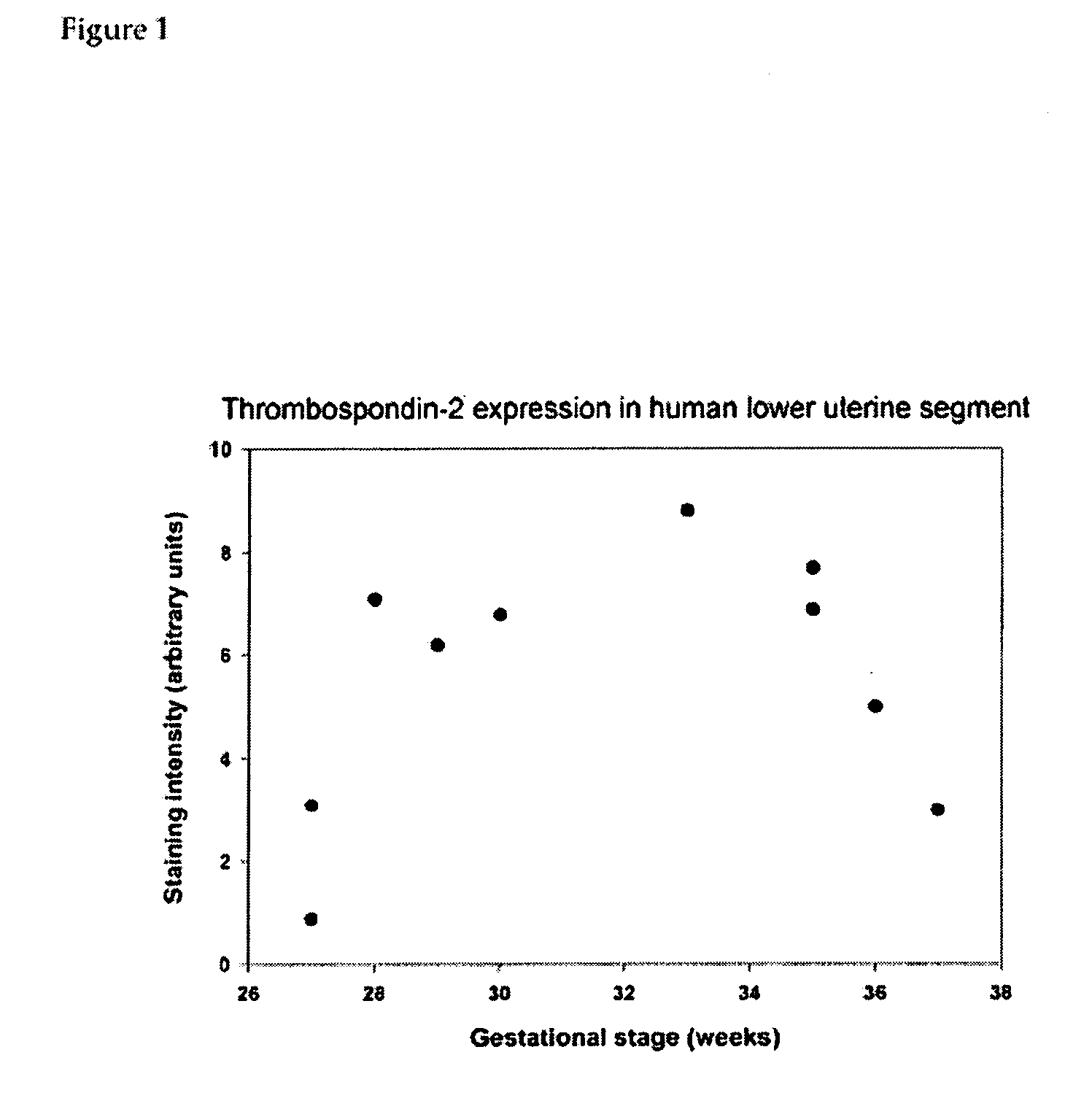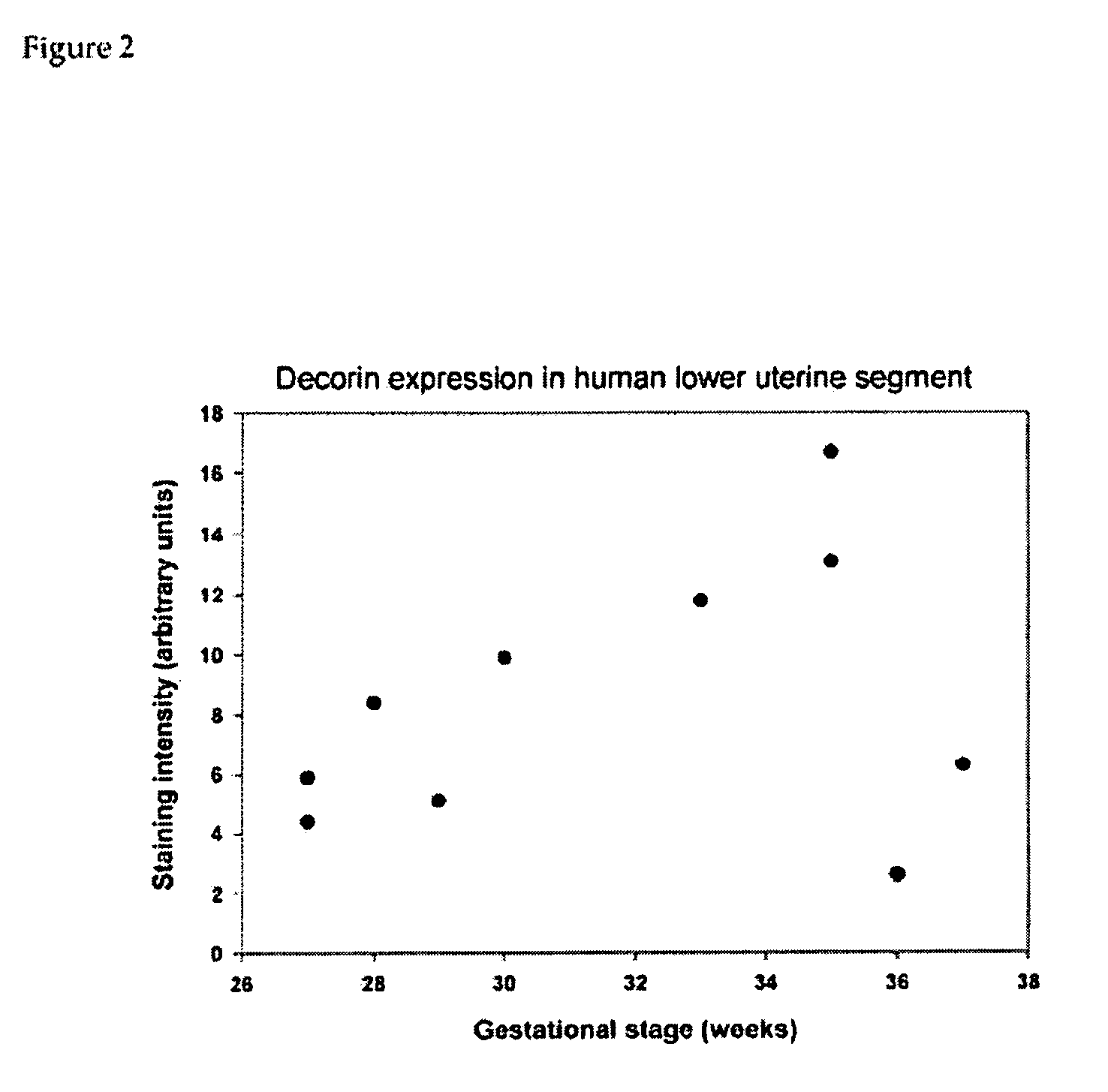Methods and kits for predicting risk for preterm labor
a preterm labor and preterm delivery technology, applied in the direction of biological material analysis, peptides, drug compositions, etc., can solve the problems of premature cervical dilatation, serious economic burden on society, and continued major cause of infant mortality and morbidity, so as to reduce prevent the risk of preterm delivery. , to achieve the effect of reducing the risk of preterm labor, and reducing the risk of preterm
- Summary
- Abstract
- Description
- Claims
- Application Information
AI Technical Summary
Benefits of technology
Problems solved by technology
Method used
Image
Examples
example 1
Kit and Method to Assess Biomarkers in Cervical Secretion Sample
[0097] Cervical secretions are collected with Dacron swabs. The exposed ectocervical surface and the posterior fornix are swabbed, and the swabs are placed into a collecting vial containing physiological saline and preservatives. The sample collection is very similar to that used for other routine assays (fetal fibronectin) that use cervical secretions as the starting material.
[0098] A concentrated detergent solution is added to the collecting vial, and the swabs are agitated in order to achieve complete release of molecules into the solution. The swabs are removed, and the sample solutions are clarified by brief centrifugation. The clarified samples and aliquots of purified standards (various concentrations of TSP2, HA, MMP2, and MMP12) are loaded into a dot-blotting apparatus, and the solution is drawn through a high-affinity protein-binding membrane (PVDF). The resulting protein spots will be used for protein quant...
example 2
Biomarker Expression in Lower Uterine Segment
[0103] The maintenance of pregnancy to term requires the coordinated function of the uterus and the uterine cervix. The cervix is a sphincter-like structure composed mainly of connective tissue that undergoes substantial remodeling during pregnancy to allow dilatation at term (Leppert, P. C, 1995, Clin Obstet Gynecol, 38:267-79). Abnormal remodeling of the human cervix is thought to cause “incompetent cervix”, or milder forms of premature cervical softening and dilatation. These cervical disorders are significant contributors to premature deliveries.
[0104] In order to determine the contribution of individual components of connective tissues to cervical function, inventor chose to study cervical properties of mice deficient in individual proteins of connective tissue. Several collagen fibril-associated proteins (decorin, lumican, fibromodulin, thrombospondin 2) have been shown to regulate morphology of collagen fibrils, and mechanical pr...
example 3
HA and MMP12 as Cervical Biomarkers
[0110] Upon further study of the animal model of spontaneous, premature cervical softening, inventor discovered elevated hyaluronic acid (HA), MMP2 and MMP12 immunostaining in the prematurely softened cervices. Thus, inventor envisions that increased levels of HA, MMP2 and MMP12 in the cervix are useful as biomarkers for premature cervical dilatation.
[0111] HA levels were studied using histochemistry following the method of Kobayashi and co-workers (45). This detection method is based on the specific binding of biotinylated HA-binding protein to HA and the subsequent visualization of hyaluronic acid-binding protein by avidin peroxidase. Controls were performed by omitting the biotinylated hyaluronic acid-binding protein from the staining sequence. The specificity of this technique was established by pre-treating cervical sections with 10 mU of Streptomyces hyaluronidase at 37° C. for 1 hour. Such pre-treatment completely eliminated staining of th...
PUM
 Login to View More
Login to View More Abstract
Description
Claims
Application Information
 Login to View More
Login to View More - R&D
- Intellectual Property
- Life Sciences
- Materials
- Tech Scout
- Unparalleled Data Quality
- Higher Quality Content
- 60% Fewer Hallucinations
Browse by: Latest US Patents, China's latest patents, Technical Efficacy Thesaurus, Application Domain, Technology Topic, Popular Technical Reports.
© 2025 PatSnap. All rights reserved.Legal|Privacy policy|Modern Slavery Act Transparency Statement|Sitemap|About US| Contact US: help@patsnap.com



